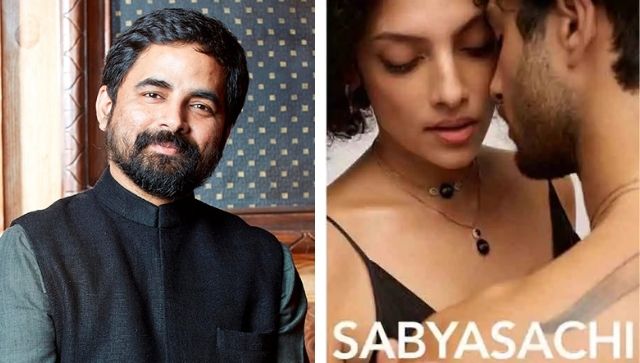Just hours after the advertisement campaign for his new line of mangalsutras debuted, ace designer Sabyasachi Mukherjee withdrew it, apparently because it triggered an avalanche of online criticism for being offensive to religious sentiments. The alacrity of his acquiescence to majority pressure and intense social media trolling was puzzling. He capitulated without even a semblance of a stance against muscle-flexing. His relatively quick retreat indicated he had learnt a lesson from the recent experience of Fabindia, that tried to defend the Jashn-e-Rivaaz caption for its Diwali collection but ultimately withdrew it. However, that lesson was clearly not sharp enough for Sabyasachi to consider scrapping his provocative campaign before the trolls’ feathers were predictably ruffled. He gave everyone a tantalising glimpse before withdrawing it. (Also read: From Fabindia to Tanishq, a look at brands that faced backlash on social media for their ads) There is no doubt this campaign has been ingenious, including anticipating the reaction its suggestive imagery would elicit. On the one hand, it would please his main constituency — his well-heeled buyers — who are socially liberal though ritually conservative. And it would irritate another lot, who are not potential buyers (nor aspire to be) but whose opposition would egg his constituency to rally even more solidly behind him.
This is quintessential Sabyasachi, a designer who is not only acutely intelligent but fastidiously careful about what he wants to convey.
From his very first runway collection, he has made a name for himself as a deliberately contrarian couturier. Yet he settled into an uncharacteristically predictable groove in recent years as the top wedding ensemble maestro, who also had a line of elaborate but curiously conventional accessories. The controversy caused by Sabyasachi’s collection for the international high street label H&M earlier this year was certainly not one he anticipated. Given his reverence for Indian textiles and design traditions, accusations of cultural appropriation levelled by handloom aficionados no doubt shocked him. It also sowed divisions in a community that once held him in high regard. He had to regain lost ground — and his mojo. (Also read: Why brands are happy with negative goodwill in the outrage industry) Now, his conceptual brilliance and ability to gauge the zeitgeist has come to the fore again with this supposedly abortive campaign. He must have noticed the newfound interest in Indian traditions in circles that once fashionably decried them as regressive. After all, Karwa Chauth is the dernier cri among ladies-who-lunch, and mangalsutras are the new Bvlgari Serpenti Tubogas watch. No wonder even Bvlgari has debuted one. Mangalsutras are already changing. Besides the classic, black-beaded necklace with gold pendants whose designs vary according to regions, there are now even minimalist bracelet and ring versions to suit the changing tastes and style preferences of modern Indian married women. It is an intrinsic part of nuptial jewellery in many parts of India, and therefore a no-brainer for those aiming for a segment of the wedding spend pie. The simple Bvlgari mangalsutra can and will be easily copied by other jewellers — as indeed Cartier’s love bracelet and Van Cleef & Arpels’ Alhambra pendant are already. But Sabyasachi’s mangalsutra will now have an even greater cachet in those rarefied circles, enhanced by its ‘brave’ assertion of iconoclasm even though it actually seeks to propagate what was once pilloried by the chatterati as a symbol of patriarchal diktat. Moreover, images of a skimpily clad, dusky, buxom girl with a signature tiger-emblazoned mangalsutra snaking down her ample cleavage can be deemed more apt for Kamasutra than mangalsutra, but the ‘iconoclastic’ slant of the imagery is clear. There is something righteously subaltern about the choice of model and theme. Why should high fashion fare be deemed fit only for skinny, alabaster-white, puritanical Alia-Bhatt lookalikes? Indeed, why should mangalsutras remain the sole preserve of the female spouse in a heteronormative married couple, for that matter? Bvlgari would never have dared to take that leap of faith in a largely ‘conservative’ society like India’s. It took an intuitive and creative mind like Sabyasachi’s to extend the mangalsutra’s promise of fidelity and commitment to embrace the gay community’s aspiration for legalising their marriages in India. In both cases, the narrative was on point for two target audiences, whose opposite reactions were crucial for the objective. The campaign did not need a prolonged exposure for the message to be driven home, and for Sabyasachi’s intended goal to be achieved. There was assured victory even in ‘defeat.’ While the trolls are probably thrilled that they supposedly carried the day with their veto, this astute designer must have a hint of a smile.
)